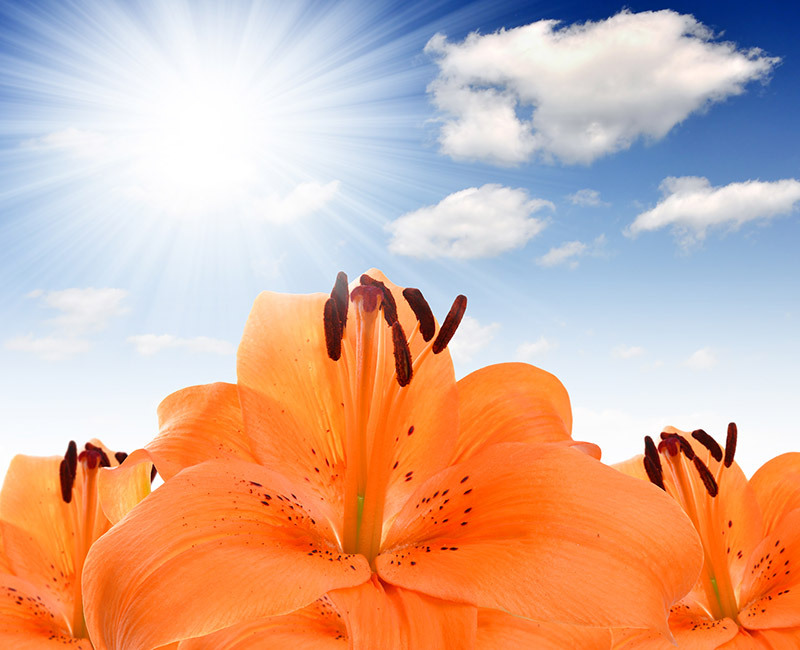Unveiling the Better Blooms with Hydrangea Care
Posted on 13/08/2025
Unveiling the Better Blooms with Hydrangea Care
Hydrangeas stand out in gardens, captivating us with their lush foliage and breathtaking blooms. Whether you're a novice gardener or a seasoned green thumb, unlocking the secret to better hydrangea blooms is both an art and a science. In this comprehensive guide, we'll unravel everything you need to know about optimal hydrangea care to help your garden flourish with robust, vibrant flowers season after season.

Understanding Hydrangeas: A Garden's Gem
Originating primarily from Asia and the Americas, hydrangeas have charmed gardeners for centuries with their bold flower clusters and remarkable variety. From the cloud-like mopheads to the elegant panicles, each species brings something special to the table. But, to achieve those show-stopping blooms, proper hydrangea care is non-negotiable.
Types of Hydrangeas
- Mophead Hydrangeas (Hydrangea macrophylla): Renowned for their large, round flower heads most often in blue, pink, or purple hues.
- Lacecap Hydrangeas: Similar to mopheads but with a flattened flower arrangement; fertile florets are surrounded by an outer ring of showy petals.
- Panicle Hydrangeas (Hydrangea paniculata): Noted for their elongated, cone-shaped clusters; can withstand more sun than other types.
- Oakleaf Hydrangeas (Hydrangea quercifolia): Famed for their distinctive oak-shaped leaves and cone-shaped white blooms that turn pink or red as they mature.
- Smooth Hydrangeas (Hydrangea arborescens): Known for their adaptability and abundant white flowers.
Knowing your hydrangea type is essential as it often dictates care requirements, especially when it comes to pruning and bloom time.
The Magic of Blooms: What Makes Hydrangeas So Spectacular?
The allure of hydrangea blooms lies in their immense, long-lasting flower heads and, in some varieties, their fascinating ability to shift color based on soil pH. These attributes make hydrangeas a favorite among gardeners aiming for breathtaking floral displays.
However, achieving better hydrangea blooms takes more than just planting and waiting. Careful attention to soil, watering, sunlight, feeding, and pruning is vital for unveiling the very best in your hydrangeas.
Essential Hydrangea Care: Cultivating Health from the Roots Up
Let's delve into proven strategies to encourage lush growth, healthy foliage, and prolific blooming:
1. Choosing the Perfect Location
- Light: Most hydrangeas thrive in partial shade--ideally, morning sun and afternoon shade. However, some species like Panicle hydrangeas can handle more sunlight.
- Protection: Shelter hydrangeas from harsh winds and extreme temperatures to prevent stress and flower damage.
Site selection plays a critical role in the overall health and bloom production of your hydrangea plants. Too much sun can scorch the leaves and flowers; too little may reduce flower output.
2. Soil Preparation and pH Influence
- Drainage: Hydrangeas demand well-drained, fertile soil. Amend heavy clay with compost, or add organic matter to sandy soils to retain moisture.
- Soil pH: Especially with Hydrangea macrophylla varieties, soil pH can affect bloom color. Acidity (pH below 6.0) produces blue flowers, while alkalinity (pH above 7.0) activates pink hues.
To manipulate bloom color:
- For blue blooms: Add aluminum sulfate or organic fertilizers such as coffee grounds or pine needles to increase soil acidity.
- For pink blooms: Use lime to raise the pH and reduce aluminum's availability to the plants.
Perform a soil test before altering pH to avoid shock or nutrient imbalance.
3. Watering Wisely
- Hydrate Deeply: Hydrangeas like consistent moisture, especially during dry spells. Water deeply at ground level 1-3 times per week, depending on heat and rainfall.
- Mulching: Apply 2-3 inches of organic mulch (like pine bark or compost) around the base to conserve moisture and regulate soil temperature.
Overwatering can also be problematic, leading to root rot. Consistent, thoughtful watering encourages strong roots and supports prolific blooming.
4. Feeding Your Hydrangeas
- Fertilize Smartly: Use a balanced, slow-release fertilizer in the spring. Avoid excessive high-nitrogen feeds, which stimulate leaf growth at the expense of blooms.
- Timing Matters: Feed once in early spring and repeat lightly in early summer for optimal results. Stop fertilizing by late summer to prevent tender growth before winter.
Proper feeding fuels robust flower production while supporting the overall vitality of your hydrangeas.
5. The Art of Pruning: When and How
Pruning is both a science and an art, especially for maximizing those coveted vivid hydrangea blooms:
- Mophead & Lacecap Hydrangeas: Bloom on old wood. Prune immediately after flowering by removing spent blooms and thinning out the oldest stems at the ground level.
- Panicle & Smooth Hydrangeas: Bloom on new wood. Prune back late winter or early spring to encourage vigorous new growth and enhance flowering.
- Oakleaf Hydrangeas: Require minimal pruning - remove dead or damaged branches right after blooming if needed.
Over-pruning--especially at the wrong times--can mean fewer or no blooms the following season. Always know your hydrangea type before reaching for the pruners!
6. Pest and Disease Management
Hydrangeas are relatively hardy but can be susceptible to pests such as aphids, spider mites, and scale insects, as well as fungal issues like powdery mildew and leaf spot.
- Inspection: Regularly check leaves for pests or disease.
- Intervention: Use horticultural oils or insecticidal soaps for pests. For fungal issues, ensure good air circulation and avoid overhead watering.
Timely intervention is key to maintaining healthy hydrangeas and ensuring continuous, vibrant blooms.
Troubleshooting Common Hydrangea Bloom Problems
Not seeing the spectacular hydrangea flowers you envision? Address these common causes:
- Improper Pruning: Pruning at the wrong time removes the next season's flower buds.
- Frost Damage: Late spring frosts can kill emerging buds, especially in colder climates.
- Excessive Fertilizing: Too much nitrogen encourages leafy growth but suppresses bloom formation.
- Insufficient Sunlight: Hydrangeas in too much shade may yield few or no blooms.
- Water Stress: Drought or poorly drained soils hurt bud formation and flower quality.
By addressing these issues, you empower your hydrangeas to flourish with abundance and beauty.
Advanced Hydrangea Care Tips for Exceptional Blooms
Soil Amendments for Maximum Color
- Incorporate chelated aluminum as needed for richer blue hues.
- Add granular lime to soil at least six months before desired bloom shift for more vivid pinks.
- Apply these changes in moderation and always retest soil pH after a few months.
Deadheading for Continuous Flowering
- Remove spent flowers by snipping just below the bloom. This neatens the plant and can encourage a second flowering in some hydrangea varieties.
Supporting Heavy Blooms
- Large-flower cultivars often benefit from discreet staking or a support ring to prevent flopping, especially after heavy rains.
Overwintering Hydrangeas
- In colder regions, cover roots with mulch and wrap stems in burlap for extra protection against winter winds and temperature swings.
Designing with Hydrangeas: Getting Creative in the Garden
Hydrangeas aren't just about individual blooms; they're versatile landscape plants too. Use them:
- As foundation shrubs along your home for year-round interest.
- In mass plantings for dramatic, cloud-like blossom effects.
- In mixed borders with perennials and evergreens--pair with astilbe, hosta, or ferns for beautiful contrasts.
- As specimen plants or focal points in the garden where their showy blossoms can truly shine.
With their adaptability, hydrangeas add elegance and charm to virtually any landscape design.

Frequently Asked Questions: Hydrangea Care and Better Blooms
How often should I fertilize hydrangeas?
Apply a balanced fertilizer in early spring as new growth appears. For most varieties, a single application suffices; for heavy bloomers, a light summer feed can help, but always avoid late-season fertilizing.
Why won't my hydrangeas bloom?
The most common reasons include improper pruning, late frosts, insufficient sunlight, or over-fertilization. Adjust care routines as needed for improved results.
Can I change the color of my hydrangea flowers?
With macrophylla hydrangeas, you can influence color by adjusting soil pH--acidic for blue, alkaline for pink. White hydrangeas, however, do not change color.
Should I deadhead hydrangeas?
Deadheading helps keep plants tidy and can sometimes spur reblooming, especially in repeat-blooming varieties. Always cut back to the first set of full, healthy leaves below the bloom.
Summary: Mastering the Art of Hydrangea Care for Exquisite Flowers
Unlocking better blooms with hydrangea care is a rewarding journey, blending horticultural wisdom and artistic flair. By mastering site selection, soil preparation, watering, pruning, and pest management--and by understanding the unique needs of your hydrangea species--you're poised to cultivate gardens awash in vivid, robust blossoms.
Take the time to observe your hydrangeas, adjust your care techniques with the seasons, and don't be afraid to tweak soil pH for color play. With a little dedication and the right knowledge, you'll soon be unveiling hydrangea blooms that are the envy of every gardener--proof of the transformative potential of conscientious hydrangea care.
Embrace these secrets for abundant hydrangea blooms, and let your garden burst forth with unmatched splendor season after season!
Latest Posts
Unveiling the Better Blooms with Hydrangea Care
The Eternal Romance of Red Roses on February 14th
Delve into the Petals That Illustrate Your Life's Story
The delightful meanings hidden in birth month blossoms
Connect the Dots: Your Birth Flower and Its Personal Symbolism





